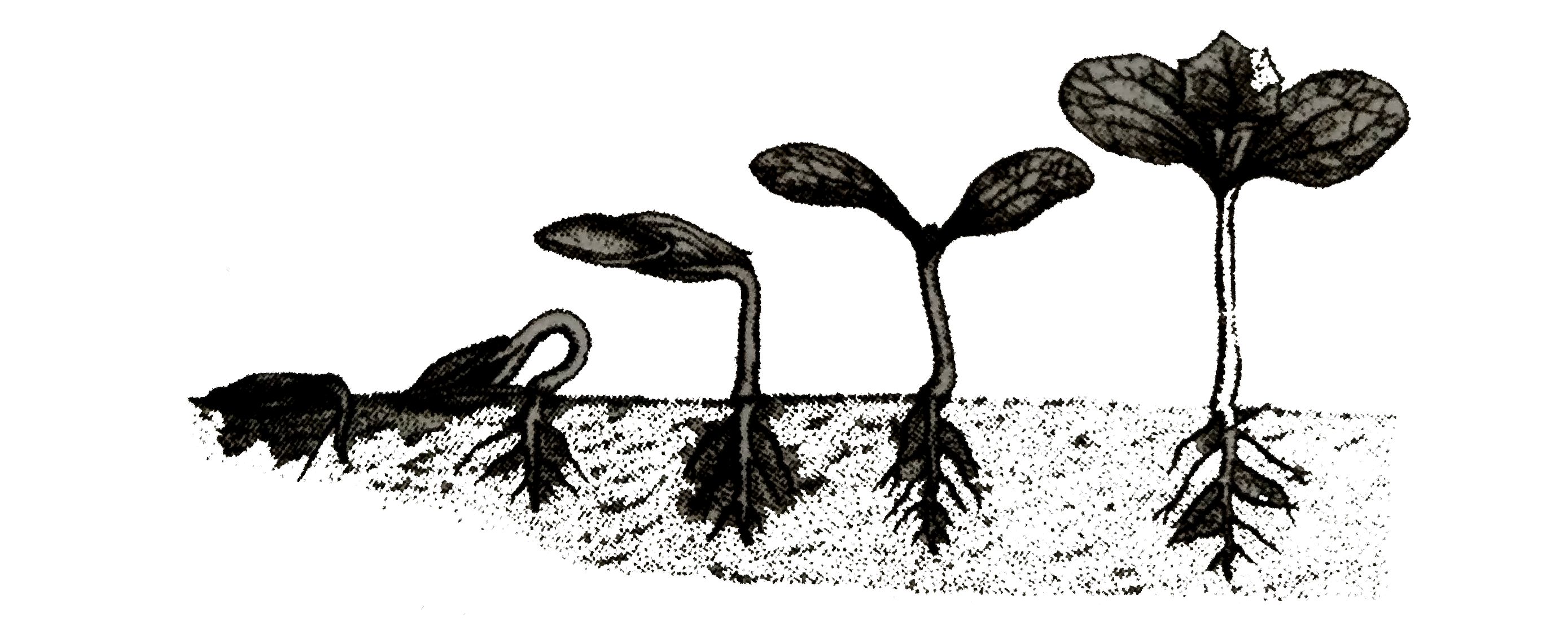During seed germination, seed coat ruptures due to
Differentiation of cotyledons
Massive glycolysis in endsoperm and cotyledons
Massive imbibition of water
Sudden increases in cell division
The correct Answer is:C
Step-by-Step Solution:
1. Understanding Seed Germination: Seed germination is the process by which a seed develops into a new plant. This involves several physiological changes within the seed.
2. Role of Seed Coat: The seed coat protects the seed and must rupture for the seedling to emerge. The rupture of the seed coat is a crucial step in the germination process.
3. Imbibition Process: The first step in seed germination is imbibition, which is the physical absorption of water by the seed. When seeds absorb water, they swell and create internal pressure.
4. Water Absorption: As the seed absorbs water, it leads to a massive increase in internal pressure. This pressure is critical as it pushes against the seed coat.
5. Rupture of Seed Coat: The increased internal pressure from the absorbed water eventually causes the seed coat to rupture, allowing the embryo (radicle and plumule) to emerge.
6. Conclusion: Therefore, the seed coat ruptures due to the massive imbibition of water during the germination process.
Final Answer: The correct answer is massive imbibition of water.
---
Topper's Solved these Questions
- BOOK - DINESH PUBLICATION ENGLISHCHAPTER - SEEDSEXERCISE - Assertion1videos
SEEDS
- BOOK - DINESH PUBLICATION ENGLISHCHAPTER - SEEDSEXERCISE - CHECK YOUR GRASP10videos
SEEDS
- BOOK - DINESH PUBLICATION ENGLISHCHAPTER - SEEDSEXERCISE - CHECK YOUR GRASP10videos
SEEDS
- BOOK - DINESH PUBLICATION ENGLISHCHAPTER - ROOTEXERCISE - CHECK YOUR GRASP10videos
ROOT
- BOOK - DINESH PUBLICATION ENGLISHCHAPTER - SENSE ORGANS EXERCISE - All Questions285videos
SENSE ORGANS
Similar Questions
Knowledge Check
- Question 1 - Select One
Seed germination is the sprouting of a seed and growth of the embryo present inside the seed into a seedling or young plant capable of independent existence. Refer the given figure showing seed germination and mark the incorrect option.
 ACotyledons are brought out of the soil by the greater growth of hypocotylBCotyledons becoms green and functional as first leaves of the seedling.CThe hypocotyl does not elongate much, instead the epicotyl grows and takes the plumule above the soil.DThis kind of germination is found in seeds of beans.
ACotyledons are brought out of the soil by the greater growth of hypocotylBCotyledons becoms green and functional as first leaves of the seedling.CThe hypocotyl does not elongate much, instead the epicotyl grows and takes the plumule above the soil.DThis kind of germination is found in seeds of beans.
In seed germination the first to occur is
View SolutionDuring seed germination its stored food is mobilised by
View SolutionDuring seed germination, apical hook formation and elongation of the axis is associated with
View SolutionGermination of seed within fruit is
View SolutionGermination of seed within fruit is
View SolutionDuring seed germination which of the following part of embryonal axis grows first in hypogeal germination?
View SolutionIn a germinating seed, the roots develop from:
View Solution
